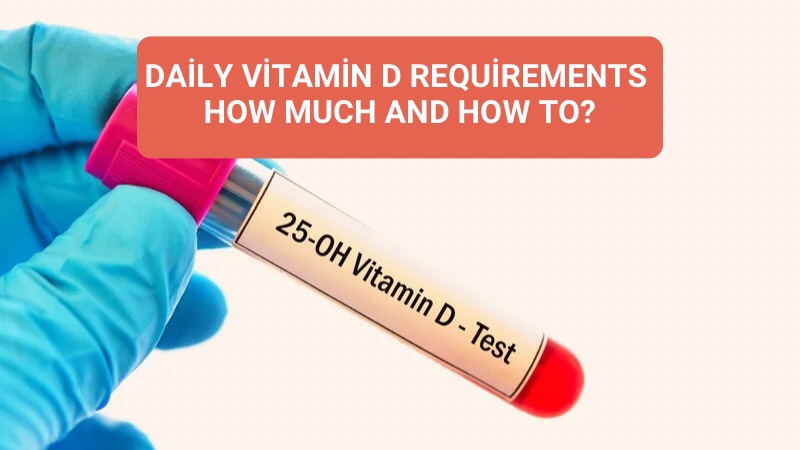Meeting Your Daily Vitamin D Requirements: How Much and How To?
Vitamin D, often referred to as the ‘sunshine vitamin’, plays a crucial role in numerous bodily functions, including bone health, immune function, and mood regulation. However, many individuals worldwide are deficient in this important nutrient. So, how much do we actually need, and how can we meet these requirements? This article aims to shed light on these questions.
The Recommended Dietary Allowance (RDA) for vitamin D varies based on age, sex, and life stages. Here are the guidelines as suggested by the National Institutes of Health:
- Infants 0-12 months: 400 IU (10 mcg)
- Children 1-18 years: 600 IU (15 mcg)
- Adults up to age 70: 600 IU (15 mcg)
- Adults over age 70: 800 IU (20 mcg)
- Pregnant or lactating women: 600 IU (15 mcg)
However, some health professionals suggest that adults should aim for about 1,000 to 2,000 IU of vitamin D per day, as the RDA may not be sufficient to maintain optimal blood levels.
The primary natural source of vitamin D is through sunlight exposure on the skin. When UVB rays hit the skin, our body starts synthesizing vitamin D. Thus, spending time outdoors, particularly during midday when the sun is at its peak, can help increase your vitamin D levels. However, factors such as location, skin type, time of year, and use of sunscreen can impact how much vitamin D you produce. Plus, too much sun exposure can increase the risk of skin cancer, so it’s essential to balance sun exposure with sun safety.
Dietary sources of vitamin D are relatively limited. Fatty fish like salmon, mackerel, and trout are some of the best food sources. Egg yolks, beef liver, cheese, and certain types of mushrooms can also contribute to vitamin D intake. Many foods are fortified with vitamin D, including milk, orange juice, and some cereals, providing additional dietary options to meet your vitamin D needs.
For those who struggle to meet their vitamin D needs through sunlight and diet, supplements may be an option. Vitamin D supplements are available in two forms – D2 (ergocalciferol) and D3 (cholecalciferol), with D3 being more effective in raising blood levels of vitamin D.
In conclusion, meeting your daily vitamin D requirements involves a multi-faceted approach combining safe sun exposure, consumption of vitamin D-rich or fortified foods, and potentially supplementation. As with any dietary changes or supplementation, it’s best to consult with a healthcare provider to discuss your individual needs and circumstances.
References:
- Vitamin D: Fact Sheet for Health Professionals. National Institutes of Health.
- The Big Vitamin D Mistake. Journal of Preventive Medicine & Public Health.
- Vitamin D and your health: Breaking old rules, raising new hopes. Harvard Health Publishing.
- Comparative efficacy of vitamin D2 and D3 supplementation in raising blood 25-hydroxyvitamin D status: systematic review and meta-analysis. British Medical Journal.
- 9 Healthy Foods That Are High in Vitamin D. Healthline.
- Vitamin D and the Immune System. Journal of Investigative Medicine.

